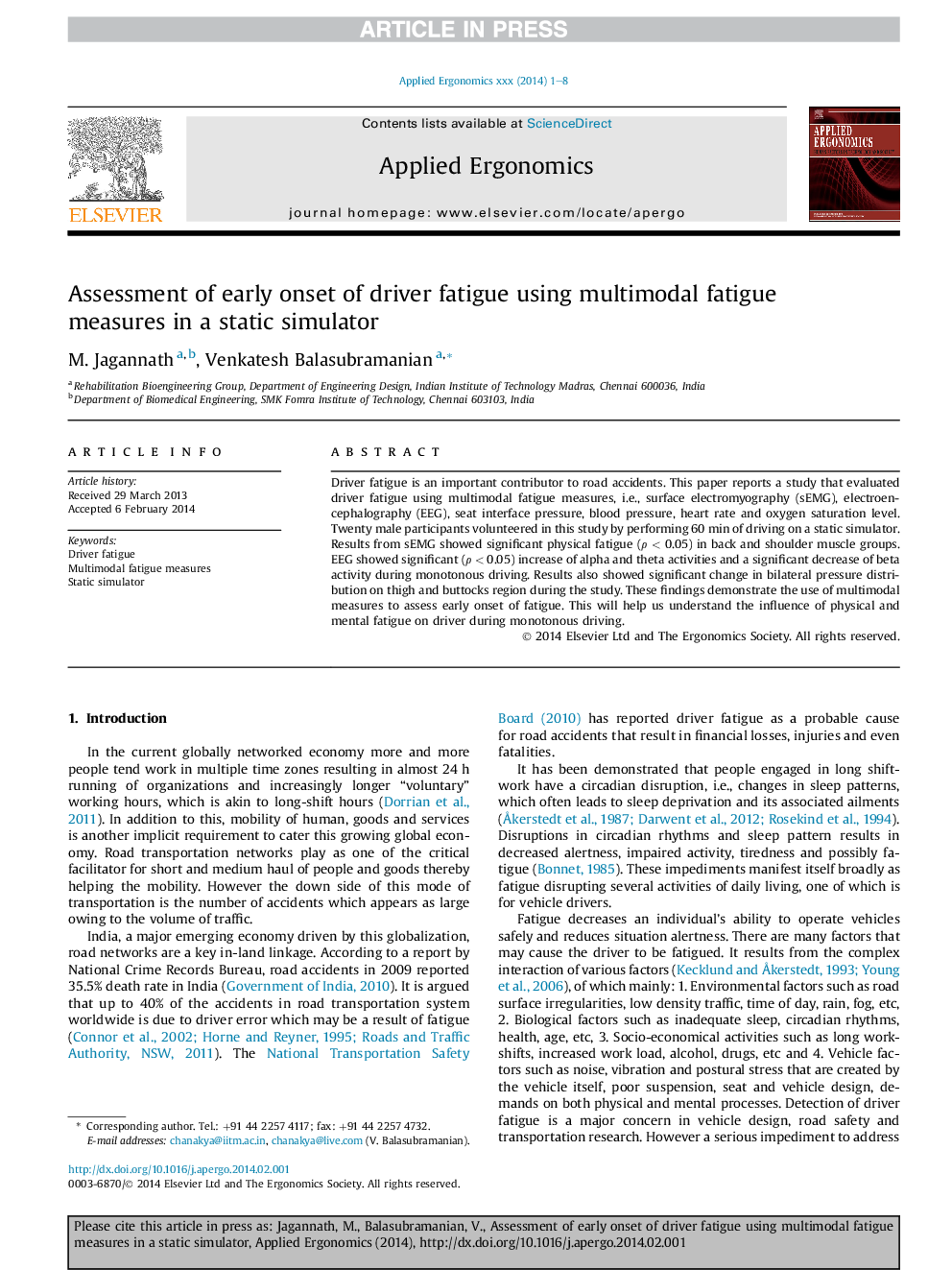| Article ID | Journal | Published Year | Pages | File Type |
|---|---|---|---|---|
| 10365903 | Applied Ergonomics | 2014 | 8 Pages |
Abstract
Driver fatigue is an important contributor to road accidents. This paper reports a study that evaluated driver fatigue using multimodal fatigue measures, i.e., surface electromyography (sEMG), electroencephalography (EEG), seat interface pressure, blood pressure, heart rate and oxygen saturation level. Twenty male participants volunteered in this study by performing 60Â min of driving on a static simulator. Results from sEMG showed significant physical fatigue (ÏÂ <Â 0.05) in back and shoulder muscle groups. EEG showed significant (ÏÂ <Â 0.05) increase of alpha and theta activities and a significant decrease of beta activity during monotonous driving. Results also showed significant change in bilateral pressure distribution on thigh and buttocks region during the study. These findings demonstrate the use of multimodal measures to assess early onset of fatigue. This will help us understand the influence of physical and mental fatigue on driver during monotonous driving.
Keywords
Related Topics
Physical Sciences and Engineering
Computer Science
Human-Computer Interaction
Authors
M. Jagannath, Venkatesh Balasubramanian,
